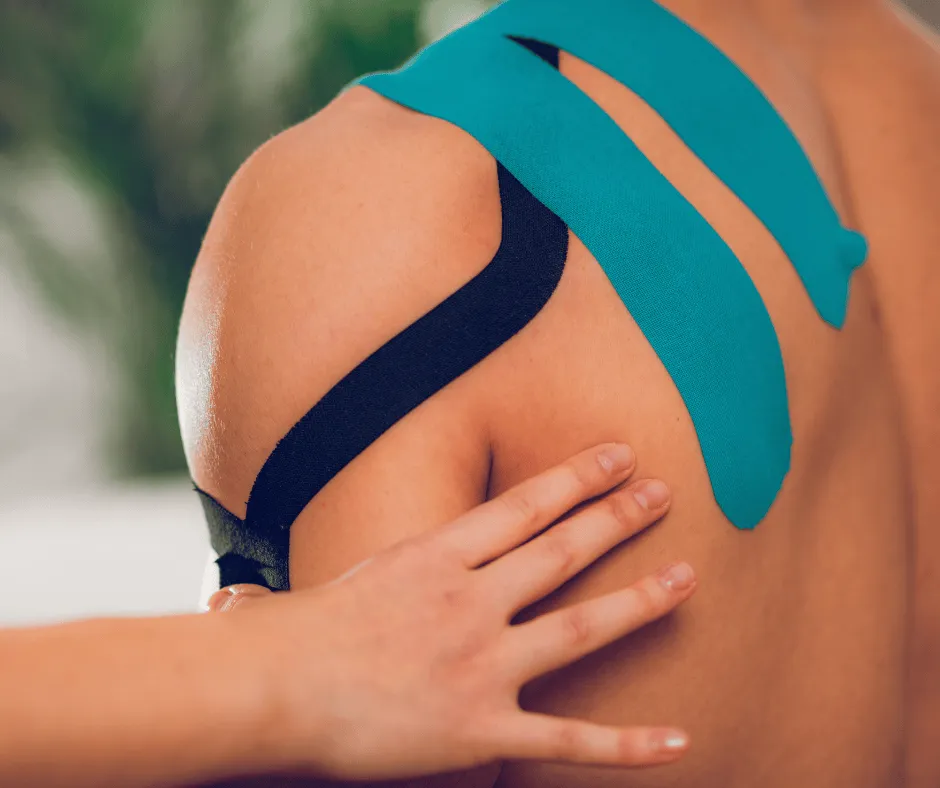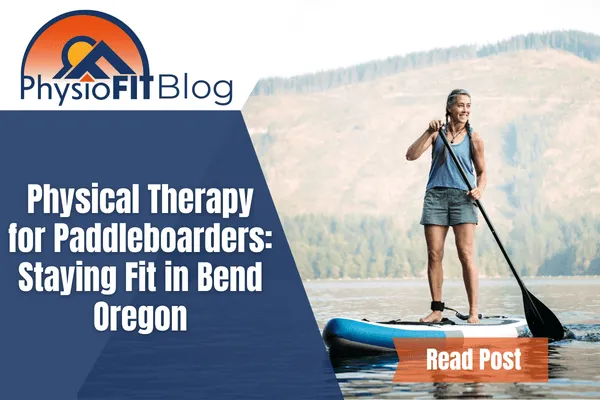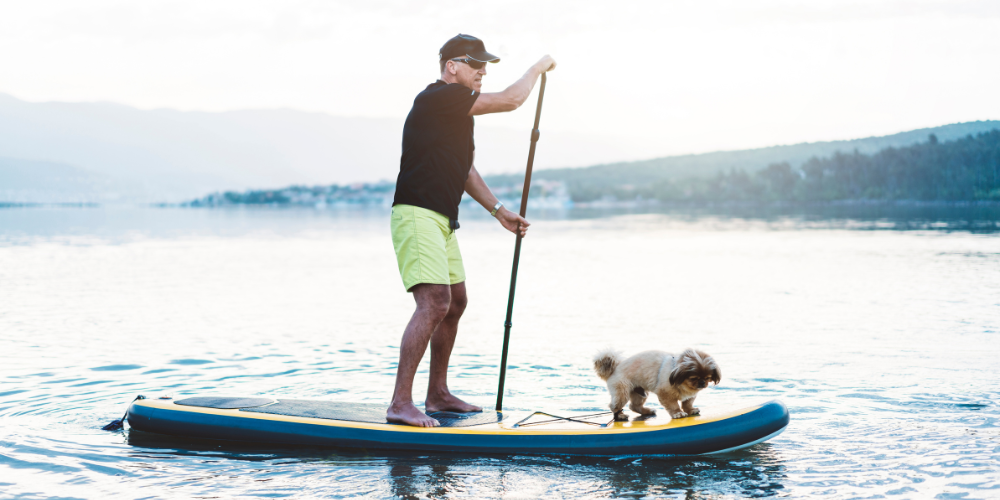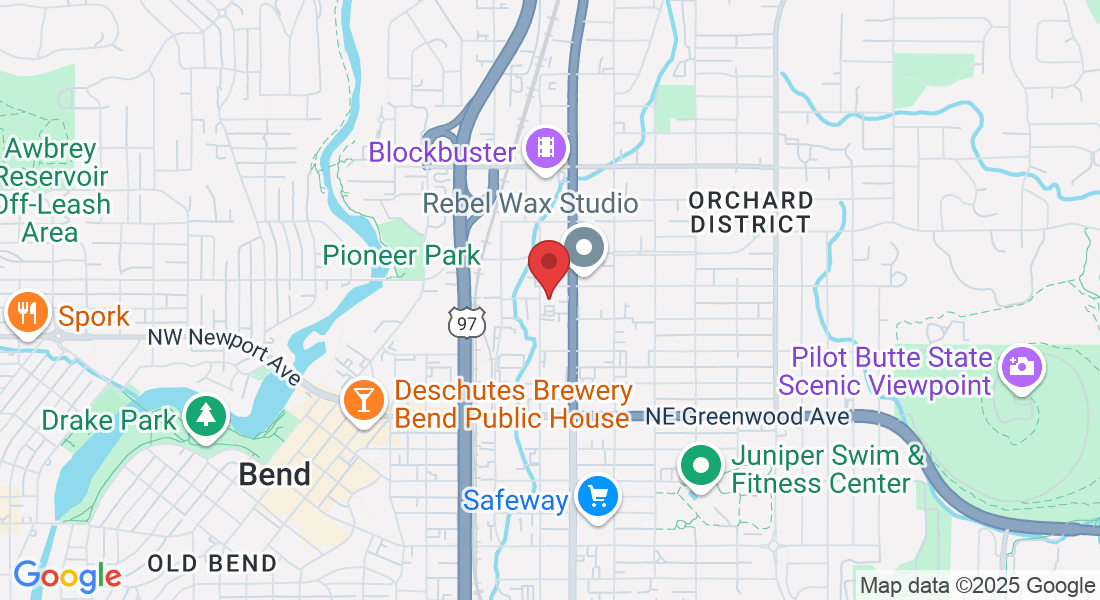Shoulder Pain Relief
Rediscover Life Without Shoulder Pain
Renowned as a marvel of human anatomy, the shoulder joint offers unparalleled mobility and flexibility, enabling us to perform a myriad of tasks, from reaching out for a book on the top shelf to throwing the perfect spiral with a football. Yet, this exceptional range of motion comes at a price. Over time, instability or impingement of the soft tissues or bony structures in your shoulder may cause discomfort and pain. This pain might be transient or persisting, may manifest only when you move, or may be a constant presence, prompting the need for professional intervention.
We're pleased to share that minor shoulder pain frequently shows a promising response to strategies such as physical therapy, the use of shoulder supports, upholding a healthy lifestyle, all of which can bring about substantial relief. Here at PhysioFit, we comprehend that each person's journey to a pain-free life is distinct. We're dedicated to delivering personalized, science-backed treatments with a fitness-centric approach to effectively ease your shoulder discomfort, helping you return to your everyday activities.
What You Should Know
The human body's most versatile joint, the shoulder, owes its expansive motion range to a quartet of muscles and their corresponding tendons, collectively known as the rotator cuff.
Intriguingly, shoulder pain may sometimes be a symptom of an issue originating from another part of the body, such as the neck or lungs. This phenomenon, known as referred pain, typically presents as a persistent ache that doesn't worsen with shoulder movement.
Shoulder discomfort or pain can result from inflammation, injury, or bone alterations surrounding the rotator cuff.
A proper diagnosis of a shoulder problem involves a thorough evaluation from a professional

Understanding the Common Causes of Shoulder Pain
The shoulder is a complex joint, and it's susceptible to a variety of injuries and conditions. Here are some of the most common causes of shoulder pain:
Dislocation: This happens when the top of your arm is pulled back excessively or rotated too far, causing it to pop out of its socket. Symptoms include pain, weakness, swelling, numbness, and bruising in the shoulder.
Separation: This injury affects the acromioclavicular (AC) joint, where the collarbone and shoulder blade meet. A hard blow or fall can tear the ligaments, leading to a visible bump on top of your shoulder due to a displaced collarbone.
Fracture: A fall or severe blow can result in a broken or cracked bone. The clavicle (collarbone) and humerus (upper arm bone) are most prone to fractures, leading to intense pain, bruising, and restricted movement.
Cartilage Tear: Repeated motion, a fall, or a significant force can damage the cartilage that cushions your shoulder joint. Symptoms include pain during overhead reach, shoulder weakness, and a sensation of catching, locking, or grinding.
Rotator Cuff Tear: The group of muscles and tendons comprising your rotator cuff secure your arm in place and enable overhead lifting. Overuse, falls, or natural aging can cause damage, leading to pain (particularly at night), reduced lifting ability, and a crackling sound during movement.
Frozen Shoulder: Characterized by restricted joint movement, this condition is caused by the build-up of abnormal tissue bands (adhesions) within the joint, often following pain or surgery-induced disuse.
Impingement: This occurs when the tendons of the rotator cuff are pinched between the shoulder bones, causing pain and swelling, particularly in individuals who frequently lift their arms overhead.
Bursitis: Overuse, repetitive motions, or an injury can inflame the bursa (a fluid-filled sac that cushions the joint), leading to pain, especially during shoulder movement.
Apart from these, other potential causes of shoulder pain include: Osteoarthritis, Rheumatoid arthritis, Heart attack, Bone Spurs, Referred pain, and Tendinitis.
Remember, if you resonate with any of the symptoms or conditions mentioned, we highly recommend making an appointment with us for a thorough evaluation and personalized treatment plan.
Preventive Measures for Shoulder Pain
The bright side of shoulder issues is that they can often be resolved without resorting to surgery. However, prevention is always better than cure, and here are some ways you can safeguard your shoulders.
Heed Your Body's Signals: Do not dismiss shoulder discomfort that follows any activity. If the pain is intense and persistent, consult your doctor. Remember, enduring unnecessary pain might only exacerbate the situation.
Maintain Overall Health: Stay in prime physical condition with regular exercise and a balanced diet. It's not just a ticket to overall wellness, but it also helps in warding off potential injuries.
Adopt Correct Exercise Habits: Ensure a proper warm-up before your workouts. Gradually ease into a sport or activity if you've been inactive for a while. Learn and adhere to the correct techniques of weight lifting, and avoid lifting beyond your capacity.
Stay Safe at Work: Be conscious of your shoulder health in your work environment -
Prioritize good posture, whether you're sitting or standing.
Follow safe lifting practices. Maintain a straight back and leverage your leg strength.
Every hour, take a few minutes to move around and stretch.
If your job involves a desk, ensure your workstation is ergonomically set up for comfortable computer use.
Avoid Overreaching: When you need to access high places, use a step stool. Arrange frequently used items within easy reach, in lower drawers or shelves.
Remember, caring for your shoulder health can keep you active and pain-free in the long run.

Common Symptoms of Shoulder Pain
Heat or a reddened appearance in your shoulder
Restricted arm mobility
Stiffness and reduced strength in your muscles
A sensation of clicking, popping, or grinding during arm movements
Discomfort in your neck, arm, or back
Remember, if you resonate with any of the symptoms or conditions mentioned, we highly recommend making an appointment with us for a thorough evaluation and personalized treatment plan.
Please Note: The information provided on our website is intended for general education and is not a substitute for professional medical advice. Each individual's situation and body is different. Therefore, what may work for one person may not work for another. We care about your well-being and advise you to reach out to us to discuss your specific needs before implementing any advice from our website.
Your Source for All Things Physical Therapy in Bend Oregon
The PhysioBlog

Physical Therapy for Paddleboarders: Staying Fit in Bend Oregon
Understanding Paddle Boarding and Physical Therapy
Please Note:The information provided on our website is intended for general education and is not a substitute for professional medical advice. Each individual's situation and body are different. Therefore, what may work for one person may not work for another. We care about your well-being and advise you to reach out to us to discuss your specific needs before implementing any advice from our website.
Introduction
Paddle boarding on the Deschutes River is a popular pastime for many outdoor enthusiasts. This activity not only offers an opportunity to enjoy the scenic beauty of the river but also provides a full-body workout. However, to fully enjoy this sport, it's crucial to stay fit and maintain good physical health. This is where physical therapy comes into play. Physical therapy plays a vital role in maintaining and improving fitness levels, making it an essential part of a paddle boarder's routine.
Paddleboarding is a sport that requires strength, balance, and endurance. It engages the entire body, from the core muscles used for balance to the arm and shoulder muscles used for paddling. As such, staying fit is crucial for paddleboarders. Regular exercise, proper nutrition, and adequate rest are all important aspects of fitness. However, one aspect that is often overlooked is the role of physical therapy.
Physical therapy, also known as physiotherapy, is a healthcare profession dedicated to improving and maintaining physical function and performance. It involves the use of various techniques, including exercises, manual therapy, and education, to treat and prevent injuries and improve physical abilities. For paddleboarders, physical therapy can help improve strength, flexibility, and balance, reduce the risk of injuries, and enhance performance.

The Sport of Paddleboarding
Paddleboarding has a rich history and has gained significant popularity over the years. It's a versatile sport that can be enjoyed in various water bodies, from calm lakes to flowing rivers like the Deschutes. The health benefits of paddleboarding are numerous. It improves balance, strengthens the core, and provides a low-impact cardio workout. However, like any sport, paddleboarding comes with its share of physical challenges and potential injuries. Common issues include strains, sprains, and classic overuse injuries, particularly in the shoulders due to the repetitive paddling motion.
Paddleboarding is believed to have originated in Hawaii, where it was known as Hoe he'e nalu. It has since spread across the world and has become a popular sport and recreational activity. Today, paddleboarding is enjoyed by people of all ages and fitness levels. It's a great way to enjoy the outdoors, get a full-body workout, and have fun.
One of the main reasons for the popularity of paddleboarding is the health benefits it offers. Paddleboarding is a full-body workout that engages all the major muscle groups. It strengthens the core, improves balance, increases endurance, and provides a low-impact cardio workout. Moreover, being out on the water and in nature can also have positive effects on mental health, reducing stress and improving mood.
However, paddleboarding is not without its challenges. The sport requires a good level of physical fitness and can be physically demanding. Common injuries in paddleboarding include muscle strains and sprains, particularly in the shoulders, back, and knees. These injuries often result from overuse, poor technique, or inadequate physical conditioning.
The Role of Physical Therapy in Paddleboarding
Physical therapy can play a significant role in helping paddleboarders prevent and recover from these injuries. It involves the use of various techniques to improve strength, flexibility, and balance, and to promote healing and recovery.
Preventive physical therapy focuses on strengthening the body and improving technique to prevent injuries. This might involve exercises to strengthen the core and shoulder muscles, improve balance, and enhance paddling technique. For example, a physical therapist might recommend exercises that truly strengthen the core, rotator cuff for shoulder health, and balance exercises to keep you on your board.
Reactive physical therapy, on the other hand, involves treating existing injuries. This might involve manual therapy techniques to reduce pain and inflammation,exercises to promote healing and restore function, and education on modifying activity and technique to prevent re-injury.
Physical therapy can be a valuable resource for paddleboarders. By improving physical fitness and technique, and by treating and preventing injuries, physical therapy can help paddleboarders enjoy their sport safely and effectively.
Overuse Injuries in Paddleboarding
Overuse injuries are particularly common in paddleboarding. These injuries occur when a particular body part is subjected to repeated stress over time, leading to damage and inflammation. In paddleboarding, the shoulders are particularly at risk due to the repetitive motion of paddling.
Overuse injuries can result in pain, reduced mobility, and impaired performance. If left untreated, they can lead to more serious problems like chronic pain and disability. Therefore, it's important to address overuse injuries promptly and effectively.
Physical therapy can play a key role in the management of overuse injuries in paddleboarding. A physical therapist can provide treatments to reduce pain and inflammation, prescribe exercises to strengthen the affected area and restore function, and provide advice on modifying activity and technique to prevent re-injury.
For example, in the case of a shoulder overuse injury, a physical therapist might use manual therapy techniques like massage and mobilization to reduce pain and inflammation, prescribe exercises to strengthen the shoulder muscles and restore mobility, and provide advice on proper paddling technique to reduce stress on the shoulder.
For more detailed information on training for paddleboarding, you can refer to thiscomprehensive guide by REI Co-op. For a real-life experience of paddleboarding on the Deschutes River, check out thisarticle by Oregon Live.

Physical Therapy Techniques for Paddleboarders
Physical therapy offers a range of techniques and exercises specifically designed to target the common problem areas for paddleboarders. These exercises focus on strengthening the core, improving balance, and enhancing the endurance of the upper body, particularly the shoulders.
Core strengthening exercises are crucial for paddleboarders as a strong core improves balance and stability on the board. Exercises, while not a comprehensive list, could include planks, bridges, and loaded carries.
Balance exercises are also important as they help paddleboarders maintain their stability on the board. These might include training on unsteady surfaces, heel-to-toe walk, as well as board specific exercises.
Upper body and shoulder strengthening exercises are vital due to the repetitive paddling motion in paddleboarding. These exercises can help prevent overuse injuries in the shoulders.
It's important to note that these exercises should be performed under the guidance of a qualified physical therapist in bend to ensure correct technique and prevent injuries. A physical therapist can provide a customized exercise program based on the individual's fitness level, goals, and any existing injuries or conditions. If you’d like to explore this more or would like to schedule a time with a physical therapist, contact us at PhysioFITBend.com
FAQs
What are the benefits of paddleboarding? Paddleboarding is a full-body workout that improves balance, strengthens the core, and provides a low-impact cardio workout. It also offers mental health benefits by reducing stress and improving mood.
How can physical therapy help paddleboarders? Physical therapy can help paddleboarders improve strength, flexibility, and balance, reduce the risk of injuries, and enhance performance. It can also aid in the recovery from injuries. Contact us at PhysioFITBend.com for help.
What are some common injuries in paddleboarding? The most common injuries in paddleboarding are muscle strains, sprains, and overuse injuries, particularly in the shoulders due to the repetitive paddling motion.
What is the difference between preventive and reactive physical therapy? Preventive physical therapy focuses on strengthening the body and improving technique to prevent injuries, while reactive physical therapy involves treating existing injuries.
What are some physical therapy exercises for paddleboarders? Physical therapy exercises for paddleboarders include core strengthening exercises like planks and bridges, balance exercises like standing on one leg, and upper body and shoulder strengthening exercises like rotator cuff exercises and shoulder press.
Conclusion
In conclusion, physical therapy plays a crucial role in paddleboarding, particularly for those who enjoy the sport in Bend, Oregon. It not only helps in preventing common injuries but also aids in improving overall performance. Whether you're a seasoned paddleboarder or a beginner, incorporating physical therapy into your fitness regimen can significantly enhance your paddleboarding experience. So, take the plunge and consider physical therapy as an integral part of your paddleboarding journey. It's an investment in your health that will pay off in the long run. Happy paddleboarding!
Please Note: It's important to note that any exercises that are shared should be performed under the guidance of a qualified physical therapist in bend to ensure correct technique and to prevent injuries. A physical therapist can provide a customized exercise program based on the individual's fitness level, goals, and any existing injuries or conditions. If you’d like to explore this more or would like to schedule a time with a physical therapist, contact us at PhysioFITBend.com
Copyright PhysioFIT 2025 . All rights reserved


